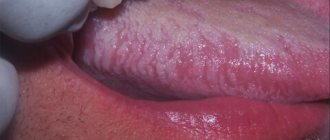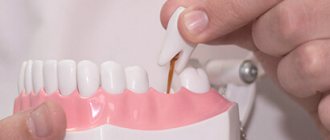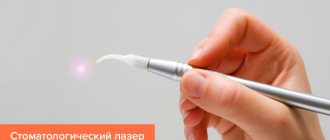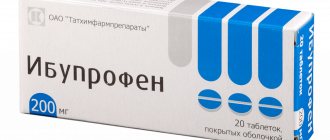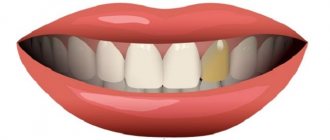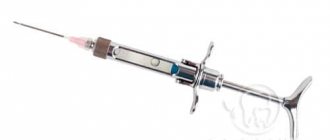Caries is one of the most common childhood diseases. The constant presence of food debris and bacteria on the surface of the teeth causes the proliferation of pathogens and begins to release acids that damage the enamel.
A cavity can appear in a temporary or permanent tooth. A filling should also be given to baby teeth to heal them in case they present with this injury, even if it is a child.
If the problem is not solved in time with a filling, caries will continue to “eat” the tooth until it reaches its inner layers. In this case, a filling is not enough to restore the health of the tooth and try to keep it in the patient's mouth.
And the fact is that once pathogens reach the pulp or nerve of the tooth, another type of deeper treatment must be performed: endodontics. Keep in mind that tooth decay is an irreversible disease, and even if it is superficial and can be treated with a filling, the lost enamel is not restored. For this reason, after filling or endodontics, the dentist should always perform crown reconstruction.
Remember that even in the first months of life and if proper hygiene is not observed at home, caries can form. In fact, so-called extensive caries bottle caries is especially common in infants. However, when the lesion reaches the inner layers of the tooth, a pulpotomy must be performed.
Pulpitis and pulpotomy
Many people believe that a baby tooth only has a crown and roots. This statement is absolutely false. Just like an adult’s, a child’s tooth has a pulp, which is an internal tissue supplied with nerve endings and blood vessels. It is the pulp that is responsible for the “nutrition” of the tooth and its sensitivity.
Pulpitis is common in children. This is a process of inflammation of the pulp that can cause serious pain, prompting an urgent visit to dentistry. Pulpitis develops in most cases against the background of deep caries, but there may be other reasons.
Treatment of pulpitis at the initial stage is quick and does not require any serious manipulation. If the pulp is severely damaged, treatment will consist of partial or complete removal of the dental nerve and infected tissue.
Pulpotomy is a procedure for partial removal of pulp in order to preserve the tooth and its “vitality”. With complete amputation, the tooth will no longer receive nutrition, lose sensitivity and may gradually collapse.
In pediatric dentistry, pulpotomy is often used, since premature tooth loss can be fraught with negative consequences. Modern methods of anesthesia and treatment allow the procedure to be performed quickly and painlessly.
Resorcinol-formalin method of dental treatment
In 1912, a German dentist from Frankfurt am Main, Julius Albrecht, proposed resorcinol-formalin paste for the treatment of complicated caries.
The composition of the treatment mixture included only two components: resorcinol and formalin. The resorcinol-formalin method is not a pathology, but is an outdated method of dental treatment with a “lot” of side effects. In the same Germany, the progenitor of the method, the material Resorcinol was discontinued more than 50 years ago.
The method is based on the bactericidal and mummifying properties of this mixture, due to which the decay of the incompletely removed pulp on which this mixture is applied is stopped. The mixture slowly hardens in the tooth canals, which was thought to seal them.
Clogging the dental canals, this mixture hardened and became glassy. The method turned out to be cheap, easy to use and became widespread due to the fact that it did not require special skills from specialists. But after some time, the tooth treated in this way acquired a reddish tint, became fragile and often caused problems for the patient. That is why it was and is necessary in the vast majority of cases to re-treat the resorbed tooth. In fact, it turned out to be a poor and short-lived therapeutic solution.
Partial or complete pulp removal
In dentistry, two methods are used to treat pulpitis: vital pulpotomy and pulpectomy. The second method involves complete removal of the pulp, but pulpectomy is rarely used in pediatric dentistry.
Vital pulpotomy is aimed at preserving the viable part of the pulp located in the root canal. In case of extensive damage, the coronal part can be removed to the borders of the “living” tissue. The advantage of this technique in pediatric dentistry is the ability of the pulp of primary teeth to continue to develop and grow. For an effective result, it is important that the periapical root is not severely damaged.
Complete pulp removal is not performed for safety reasons. As a result of depulpation, damage to the tooth buds, disruption of the root canal system, or the development of complications due to the not yet formed dental system may occur. For these reasons, when there is pulpitis in primary teeth, dentists decide to remove the tooth or perform a vital pulpotomy. In case of pulpitis of a permanent tooth, a pulpectomy is performed.
Pulpotomy process
Pulpitis in a child can be detected during a routine examination, if there are no severe symptoms, or when contacting a specialist with complaints. After diagnosis, the doctor decides on the feasibility and effectiveness of partial pulp removal. Treatment is carried out only in the absence of purulent processes and obvious signs of inflammation of the soft tissues of the tooth.
Indications for pulpotomy in pediatric dentistry are:
- asymptomatic pulpitis;
- reversible process of pulp damage.
Pulpotomy in children takes place in two stages, the interval between which can be up to six months.
At the first stage, the dentist, using local anesthesia, removes the affected tooth enamel and dentin. Afterwards, the doctor opens the pulp chamber and removes the part of the tissue that is infected. In most cases, the pulp is amputated at the level of the root canal branching. The first stage ends with the application of medication into the tooth cavity to eliminate pathological processes and accelerate tissue restoration. The last step is to seal the tooth with a temporary filling.
Over the next months, the dentist monitors the condition of the tooth, the healing processes and restoration of the pulp. If no complications arise, the child is given a permanent filling.
What is the difference between baby tooth pulpotomy and pulpectomy?
In many cases, patients confuse these two procedures, especially because they are similar terms. A pulpectomy is a treatment that goes beyond a pulpotomy and can be considered a root canal treatment for baby teeth. That is, it consists in completely emptying the pulp cavity of the tooth if pulpotomy of primary teeth is not sufficient to save the tooth.
In our clinic, specialists perform pulpotomy in children. Professionals solve the problem quickly and prevent complications from developing. Make an appointment today.
Features of pulpotomy
When carrying out any treatment, no doctor can 100% eliminate the risks of recurrence of the disease or complications. The vital pulpotomy method has been used in dental practice for quite a long time, so the treatment technique has been worked out flawlessly by specialists and is recognized as safe. However, the result largely depends on the professionalism of the doctor. If the dentist makes a mistake during a pulpotomy in children, the tooth will need to be removed.
To avoid complications in pediatric dentistry, materials such as calcium hydroxide, formocresol, metal trioxide conglomerate or adhesive resin are used to cover the pulp. The tooth is filled with biocompatible composite materials that do not cause allergies: trioxide conglomerate, ferrous sulfate, trioxide conglomerate or formocresol. It is important that both composites are combined with each other. Mostly the same material is used.
The cavity formed after the removal of part of the pulp is filled with a preparation that should not interfere with the process of absorption (resorption) of baby teeth to prevent disruption of the growth of permanent teeth.
Tooth pulpotomy in pediatric dentistry is recognized as an effective treatment method, but it is done only at the initial stage. Avoiding an irreversible inflammatory process and premature tooth extraction due to the impossibility of preserving the pulp is possible only with timely contact with specialists. Preventive techniques will allow you to notice the pathology in time and begin treatment.
Pulpotomy in pediatric dentistry
A pulpotomy is a dental procedure in which the pulp in the crown (the visible part of the tooth) is removed while the pulp in the root canal is left intact. Mainly performed on baby teeth (in children), when caries has affected the pulp.
If a child complains of pain when cold, hot or sweet substances touch the tooth/teeth, this is one of the signs of pulpitis. Pulpitis is an inflammation of the pulp, and its main cause is untreated caries.
This tooth sensitivity is usually the first sign that a child has tooth decay.
The dentist will recommend a pulpotomy if, after examining the teeth, he finds caries that has affected the pulp in the crown. The examination is carried out by physical examination of the tooth or x-ray.
If it is discovered that the child has irreversible pulpitis caused by tooth decay, when the pulp in the tooth is severely damaged, the pulpotomy is canceled. Instead, a pulpectomy or tooth extraction is performed.
A pulpotomy is performed when a child has serious physical trauma to a tooth. Pulpotomy is performed to preserve the root of the tooth and the pulp in it.
Why is the affected tooth not removed?
The reason is that the primary tooth ensures that proper space and sufficient space is maintained for the growth of the permanent tooth.
Literally, “pulpotomy” translates as “cutting the pulp.” However, in the medical community, the term refers to the entire procedure, including filling the space from which the pulp is removed with medication.
Pulpotomy is usually performed on primary teeth, but can also be performed successfully on permanent teeth.
A pulpotomy is not to be confused with a pulpectomy, which is done when tooth decay extends beyond the pulp at the crown to the pulp at the root of the tooth (radicular pulp).
Risks and contraindications
Pulpotomy is a safe procedure without serious risks. The procedure is not performed if the pulp at the root (radicular pulp) has died. This means that the pulp must be free of infection and healthy at the time of the procedure.
How long does a pulpotomy last?
The patient remains in the dental chair for 30 to 45 minutes, in some cases a little longer.
Where do they make it?
The procedure takes place in the dentist's office.
What to wear
Since this is a dental procedure, the child is dressed in any comfortable clothing.
What do they take with them?
If your child has a toy that will be comforting after the procedure, take it with you.
What does a dentist do?
The dentist numbs the area around the tooth with a local anesthetic, then injects the anesthesia into the gums. In addition, the child may be given a sedative. The option is at the discretion of the doctor.
The dentist finds the tooth to be treated, removes caries, and prevents infection of the pulp.
The pulp chamber is opened by drilling through the enamel and dentin and it bleeds, this shows that the pulp is healthy. If the pulp chamber is filled with pus or is empty and dry, the dentist will not proceed with the pulpotomy or perform a pulpectomy or tooth extraction.
The pulp in the crown is then removed/extracted. Once this is done, moist cotton swabs are used to stop the bleeding and clean the area. Ideally, bleeding stops within a minute or two, five at most. All dentists have their own time constraints.
If bleeding does not stop after this time, it indicates that the pulp is fundamentally unhealthy and is likely affected by decay. In this case, a pulpectomy or tooth extraction is performed.
As soon as the bleeding has stopped, the radicular pulp is treated with medicinal preparations of the dentist’s choice:
- formocresol;
- ferrous sulfate;
- mineral trioxide aggregate.
After this, the pulp chamber of the tooth is sealed with zinc oxide eugenol cement or other material. Then the tooth is restored. This is usually done with a stainless steel crown.
After the procedure
The child may experience pain and/or gum swelling after the procedure. The doctor will most likely prescribe a pain reliever.
The dentist will provide instructions on the types and temperatures of foods the child eats for several days after the procedure. Your doctor will likely advise you to avoid eating candy or other sticky foods until the stainless steel crown used to restore the tooth falls out.
To prevent other teeth from becoming damaged by caries:
- take care of your oral cavity;
- ask your dentist for dental care recommendations;
- Visit your dentist regularly.
Conclusion
It is natural to feel anxious when a child undergoes any medical procedure. Pulpotomy is performed without risks. The child will return to normal activities after the anesthesia or sedative used during the procedure wears off. If you have any questions or concerns, discuss them with your dentist.

